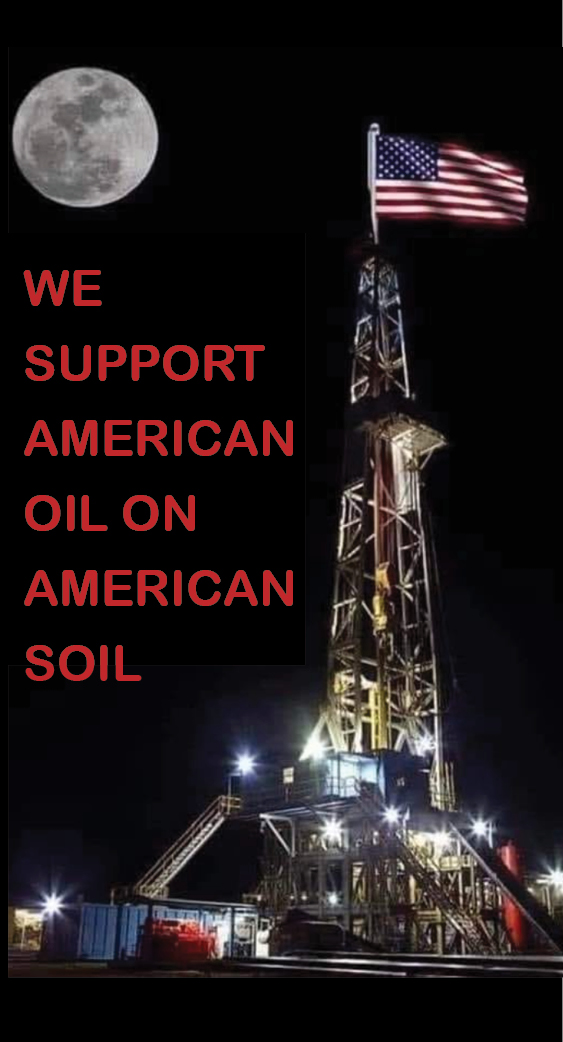A Shift in Balance:Colorado BLM Oil, Gas Approach Reflects Changing Economy, Adds to Industry Unease

[Click image to enlarge]

Drill rig for Laramie Energy in high country northwest of De Beque.
[Click image to enlarge]
A Bureau of Land Management proposal released this summer represents a stark shift in how it would approach local oil and gas leasing, which supporters of the change say also reflects significant diversification in the Colorado’s economy and changes in people’s priorities for public land uses.
Whereas most of the land and federal minerals administered by the agency’s Grand Junction and Colorado River Valley field offices are currently open to leasing, a draft resource management plan amendment and supplemental environmental impact statement for the two offices would close to future leasing most of the acreage the offices administer, limiting future leasing only to areas identified as having high oil and gas development potential.
“I think this is like a long overdue rebalancing of the BLM that’s catching up with where the community is,” said Scott Braden of Grand Junction, director of the Colorado Wildlands Project.
“It’s catching up with how diversified the economy has become in the planning area and the changing nature of the expectations people have toward public lands as places to recreate, as places to hunt, as a backdrop that draws people to move, and move with their businesses, to our community,” added Braden.
The BLM’s local proposal also is reflective of a changing approach nationally to its oil and gas leasing program under the administration of President Joe Biden, all of which has local industry representatives worried about the future of public-land drilling.
“There’s definitely a death by a thousand cuts approach to this,” said Chelsie Miera, executive director of the West Slope Colorado Oil and Gas Association.
She noted the agency also is working on releasing proposed changes to its resource management plans in Colorado to better protect big game migration corridors and other habitat from oil and gas development.
In the case of the proposed leasing changes in the two local field offices, Miera believes putting so much acreage off-limits to oil and gas development “at a time when Coloradans and Americans can least afford higher energy prices and higher food prices is a scary approach to energy policy from this administration.”
HOW WE GOT HERE
The BLM’s proposals comes in response to legal challenges by conservation groups. It approved resource management plans for the two offices in 2015. Conservationists sued over the Colorado River Valley plan, and a judge found that the BLM should have considered a wider range of alternatives when it comes to the amount of acreage open to oil and gas leasing, and failed to adequately analyze potential downstream greenhouse gas emissions from the use by consumers of oil and gas produced under the plan.
The BLM also was sued over the same issues in regard to the Grand Junction plan, and agreed to do a supplemental environmental impact statement for both plans to address the deficiencies identified by the court in the Colorado River Valley plan ruling.
The Grand Junction Field Office manages just more than 1 million acres of surface lands and a total of about 1.23 million acres of federal oil and gas estate, much of it overlapping, while the Colorado River Valley Field Office manages nearly 500,000 acres of land and nearly 700,000 acres of federal oil and gas.
Currently, 80 percent of the total Grand Junction Field Office decision area is open to oil and gas leasing, as is nearly 90 percent of the acreage in the Colorado River Valley Field Office decision area. Under the preferred management alternative the BLM identified in its draft EIS, only 239,000 acres in the Grand Junction Field Office and 143,000 acres in the Colorado River Valley Field Office would be open to future leasing.
While closing off other areas to future leasing, the preferred alternative would keep 93 percent of the high oil and gas development potential acreage open to leasing in the Colorado River office and 44 percent of the high-potential acreage in the Grand Junction office.
In a virtual meeting on the draft EIS, Greg Larson, manager of the BLM Upper Colorado River District, described the preferred alternative as one that strikes a balance between multiple uses of BLM land.
“We’re not there yet and we’ll be making sure we have all the best information before we make a decision on this,” said Larson.
The agency is accepting public comments on the EIS and alternatives it outlines through Nov. 1.
The BLM also is currently working on a proposed new oil and gas leasing rule that includes provisions such as higher bonding requirements to help ensure money is available to plug old wells and reclaim well sites, making permanent a higher, 16.67 percent royalty rate that the Inflation Reduction Act put in place for 10 years, and steering oil and gas leasing away from important wildlife habitat and cultural sites and toward lands with existing infrastructure or high production potential.
VARYING REACTIONS
“The actions taken by the BLM are at the directive of the current administration whose goal is to eliminate fossil fuel development in the name of climate change. All actions ... will make energy more expensive for both state and national consumers. This is compounded by excessive and often duplicative regulations, which will increase the cost of producing oil and gas,” Robert Boswell, chairman and CEO of Laramie Energy, which drills locally, said in an email.
“The acreage being taken off development of public lands is excessive and does not fully consider the potential of these public lands based upon current and future technologies. So, it begs the question why is this being done since the public benefits both from royalties and reduced energy costs?,” added Boswell.
Peter Hart, staff attorney for the Carbondale-based Wilderness Workshop, one of the groups that had legally challenged the two local resource management plans over oil and gas, said he thinks the range of alternatives the BLM is considering now “is a major improvement and shows the agency is thinking more seriously about not making oil and gas the dominant use on BLM lands, which I think historically has been the framework it operated under.”
He said he thinks that change has been a long time coming, given how the economy of western Colorado has diversified and is no longer dominated by oil and gas.
The Wilderness Society also was involved in the litigation over the local management plans. Jim Ramey, Colorado state director for that group, said in a news release about the new proposal that it “is a refreshing change of pace from the agency. We’re encouraged that the Bureau put forward a proposal that has the potential to balance conservation as a valuable multiple use on our public lands. For far too long, extractive industries have had outsized access to these lands, and this plan is a tremendous opportunity to utilize all of the conservation tools available to the Bureau of Land Management to protect intact landscapes and reduce damaging climate emissions.”
Braden said closing off a lot of acreage to leasing will mean areas like the Dolores River Basin and the Upper Colorado River corridor in Eagle County won’t be clouded by the threat of largely speculative oil and gas leasing despite having minimal oil and gas resources. The possibility of leasing could threaten protection of such areas on behalf of things such as wildlife habitat and backcountry recreation, he said.
Closer to Grand Junction, the BLM’s proposed management alternative would close the Bangs and North Fruita Desert special recreation management areas to leasing, among other changes.
Kathleen Sgamma, president of the Western Energy Alliance oil and gas trade group, thinks the BLM proposal discounts the potential of industry when it comes to developing oil and gas in areas historically not seen as having high development potential.
She said it’s “really shortsighted” to lock away 1.6 million acres from leasing because it has low or medium development potential. She said areas once seen as having low or medium potential in North Dakota and New Mexico are now some of the most prolific oil and gas basins in the world. The fact that somebody has nominated something (for leasing) in what the government thinks is low or medium potential is itself a signal that something is prospective,” Sgamma said.
NERVOUS IN THE NORTH FORK
Over in the North Fork Valley, some people are worried the BLM’s proposed new national leasing rule could end up resulting in drilling there that they don’t want to see. Natasha Léger, executive director of Citizens for a Healthy Community in Paonia, said the concern derives from the proposal’s focusing on leasing in areas with high development potential or proximity to existing infrastructure, without any other guardrails to take into account whether an area is appropriate for leasing.
She wants to see the BLM also to take into account factors such as watershed concerns, the value of lands when it comes to things such as recreation and wildlife habitat, and the level of local climate impacts being experienced, when determining appropriate areas to lease.
“I think our major point is we commend the BLM for putting in place these conservation goals (in the rule), but conservation should not be at the expense of concentrated development or creating sacrifice zones. The only way around that is having rules that have clear guardrails saying where and when an area is clearly not appropriate for leasing and development even if it has high development potential,” Léger said.
Gunnison County and the towns of Paonia and Cedaredge are among others who have written to the BLM with the same concern, she said.
Under another legal settlement, the BLM Uncompahgre Field Office in Montrose is reconsidering how much acreage should be open for oil and gas leasing in places including the North Fork Valley under its new resource management plan for that office.
ECONOMIC IMPLICATIONS
Meanwhile, a big focus of attention regarding the BLM’s proposal for the two local field offices surrounds its economic implications. The BLM says the potential number of wells drilled within the Grand Junction Field Office over 20 years could be reduced by 541 based on its proposal, and 58 wells would be forgone within the Colorado River Valley office’s jurisdiction over that same time. It estimates the annual economic impact per well not drilled would be about 11 lost jobs, mostly resulting from indirect employment, and losses in labor income per well annually would exceed more than a half-million dollars.
Annual federal royalty payments that would be forgone under the proposal would be just under $49 million a year, growing to just over $51 million annually by the late 2030s, the BLM estimates.
In the 2020 federal fiscal year, federal gas production within the decision area for the BLM proposal totaled about 177 billion cubic feet in Garfield County and 15.6 billion cubic feet in Mesa County. The federal Energy Information Administration says that in 2022, domestic natural gas consumption averaged 88.5 billion cubic feet per day.
Federal oil production within the decision area in 2020 totaled about 431,000 barrels in Garfield County and 29,240 barrels in Mesa County. The Colorado River Valley Field Office has about 2,300 producing federal oil and gas wells.
In 2021, the Colorado Department of Local Affairs reports, $32.3 million in federal mineral lease dollars was distributed in the state in the form of discretionary grant awards, and formulaic distributions to counties, municipalities and school districts.
The Mesa County Federal Mineral Lease District has awarded more than $11 million in local grants since 2011.
Hart points to a recent report by the Conservation Economics Institute on the economic transition away from federal oil and gas in Mesa and Garfield counties, which said that mining and oil and gas jobs accounted for only 2 percent of the jobs in the two counties in 2020, and only 1 percent of the workforce depends on federal oil and gas production.
He noted the region’s oil and gas production peaked in 2012, and pointed to the significant economic roles being played by outdoor recreation and amenity development locally, while also pointing to the economic costs caused by the carbon emissions stemming from oil and gas development in the state.
Hart said if people are to believe the science about climate change, which he thinks is pretty irrefutable, there needs to be an end to oil and gas leasing. But that being said, companies already have a huge inventory of leased acreage within the two local BLM field offices that will remain available for development and production, he said.
Currently, companies have federal leases covering nearly 350,000 acres within the Grand Junction Field Office and 85,700 acres in the Colorado River Valley Field Office. While some of that acreage is in areas the BLM is proposing closing for future leasing, the current leases remain valid as long as they don’t expire due to lease terms such as lack of production or companies don’t relinquish them.
This week, U.S. Rep. Lauren Boebert, R-Silt, and Colorado’s two other Republicans in Congress, Reps. Doug Lamborn and Ken Buck, were among members of Congress sending a letter to BLM Tracy Stone-Manning asking that she rescind the BLM’s proposal pertaining to oil and gas leasing in the two field offices.
“Closing the door on over 1.6 million acres of vital public lands for energy development is not just an issue of economics; it’s a threat to our nation’s energy independence and security. This proposal goes beyond necessary environmental considerations and instead seeks to restrict access to promising resources, hindering the potential for economic growth and prosperity, particularly in the West Slope of Colorado. Rogue bureaucrats at the BLM shouldn’t be unilaterally locking up more land in Colorado,” U.S. Rep. Lauren Boebert said in a press release.
RECREATION’S ROLE
The BLM’s local leasing proposal comes as nationally it also is establishing what it calls a Blueprint for 21st Century Outdoor Recreation that it says on its website creates “a new vision to proactively manage for exceptional and unique recreational experiences that invite all to share in the enjoyment and stewardship of their public lands.”
Cole Hanson, co-owner of Gear Junction, a local outdoor gear store, welcomes the direction the BLM is taking in its local leasing proposal.
“I’m happy the BLM revisited this and came up with what I see as a little more balanced approach to having all parties taken care of, from our perspective,” Hanson said.
He pointed to research by professors Nathan Perry, Tim Casey, and Johnny Snyder at Colorado Mesa University, showing that outdoor recreation directly accounts for 4.8 percent of gross domestic product in Mesa County and 8.4 percent of employment.
“I know and understand that obviously the oil and gas community is going to say otherwise but from an outdoor perspective I think this is a net benefit for the economy,” Hanson said of the BLM’s proposal.
He said he understands the need for oil and gas, and high-value oil and gas lands most likely to be drilled should be left open for leasing. He also acknowledged the high pay of oil and gas jobs.
”There’s no doubt about it that when they exist, those are great jobs. But the reality is as we’ve seen over and over on the Western Slope, those jobs are not long-term. They come and they go. I think a more durable economic widespread base is something that we should aspire to and I think that’s what outdoor recreation is providing,” Hanson said.
Miera said that currently, developing oil and gas in Colorado is hard because of the state and federal administrations currently in charge.
“We’re hopeful that we can balance that out and come under some regulatory certainty to where we can continue to develop the leases that we hold and any future leases that are financially viable that we can produce responsibly,” Miera said.
By: Dennis Webb, The Daily Sentinel




















